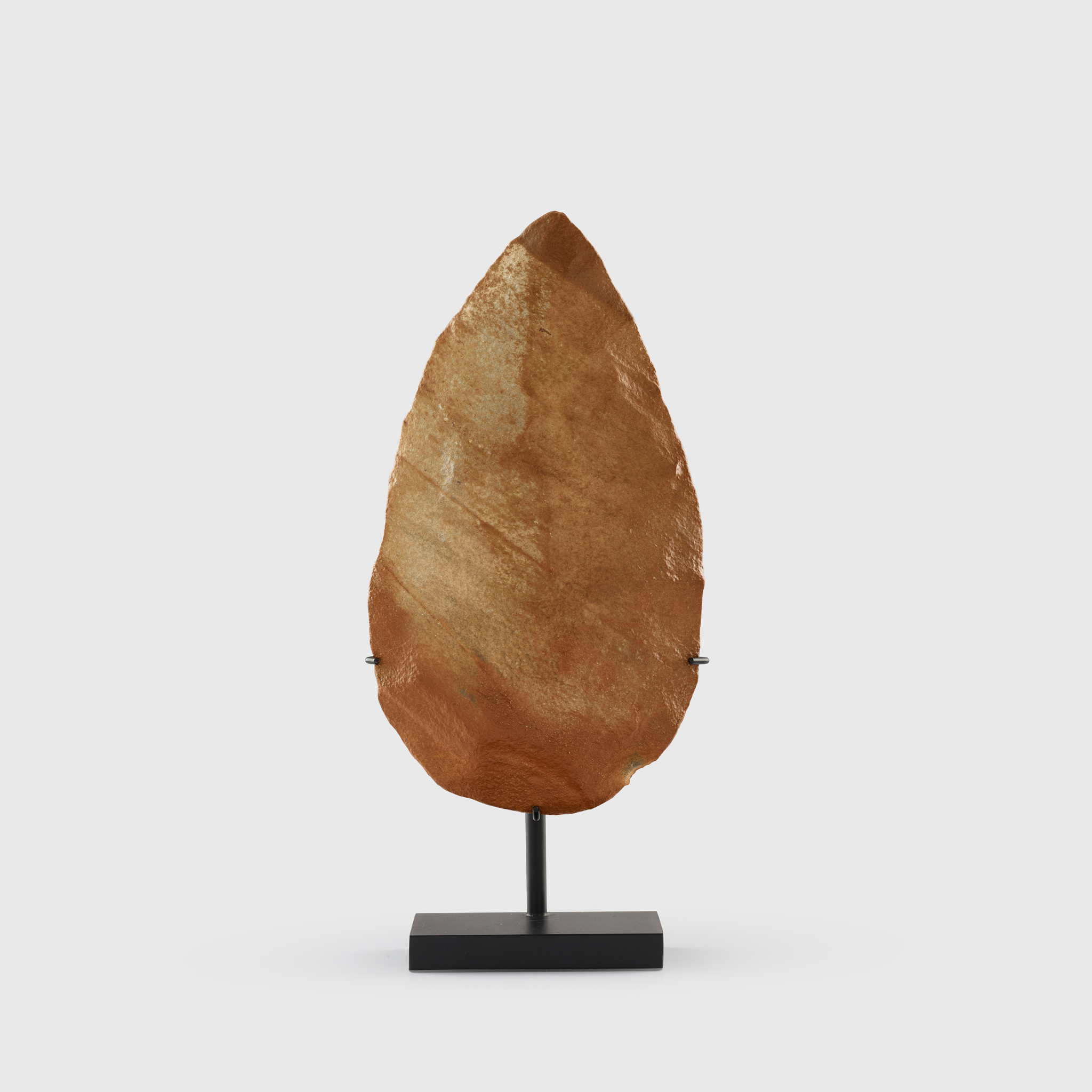AFRICAN PALAEOLITHIC STONE HANDAXE
WESTERN SAHARA, LATE ACHEULEAN, 250,000 - 200,000 B.C.
Estimate: £400 - £600
Auction: 13 March 2025 from 13:00 GMT
Description
knapped quartzite, of teardrop form, with a glossy desert patination, raised on a bespoke mount
Dimensions
17.7cm high
Provenance
Private collection, Belgium, formed late 1960s – present
Footnote
This Acheulean handaxe, with its sand blasted patination coming as the result of centuries of exposure to the Saharan environment, dates to around 250,000 B.C. It was used for tasks such as digging, chopping, and butchering.
Handaxes are the earliest and longest-used tools made by hominids, with a history spanning 1.7 million years. They reflect an early human interest in both functionality and form, with makers often crafting symmetrical edges and faces beyond practical needs. This attention to detail highlights not only their usefulness but also an early sense of aesthetics in tool-making.

